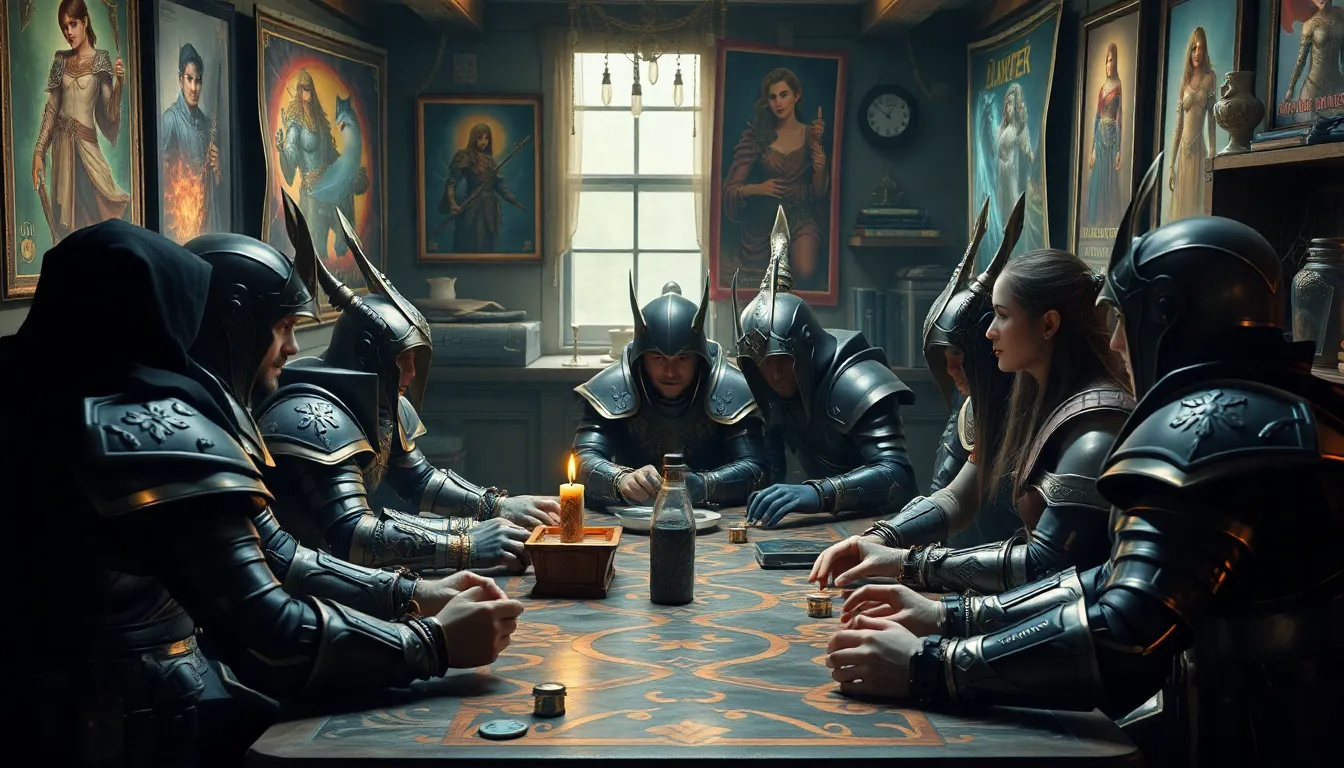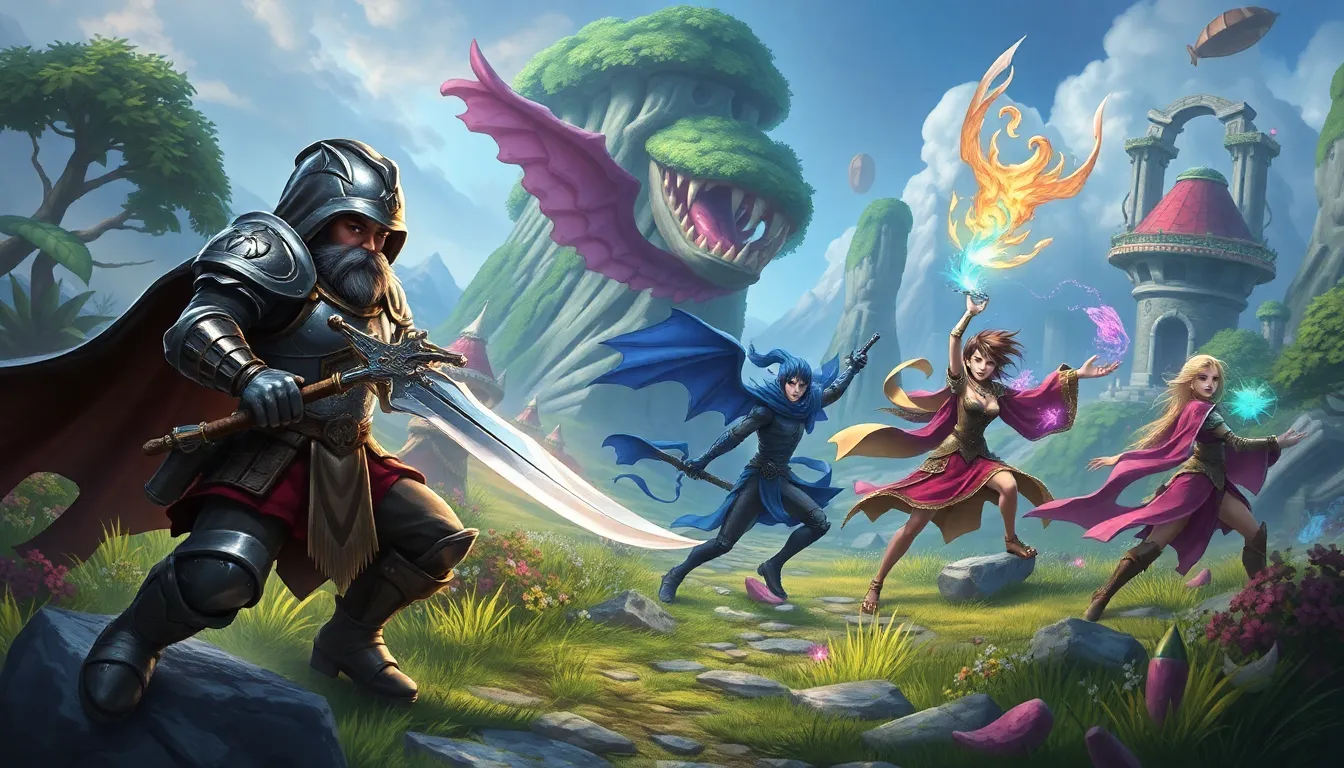Table of Contents
ToggleIn the vast realm of gaming, where heroes and villains clash, there’s a secret weapon that can elevate any character from ordinary to extraordinary: dual classing. Imagine wielding the magic of a sorcerer while swinging a sword like a seasoned warrior. It’s like being able to enjoy pizza and tacos at the same time—why settle for one when you can have both?
Understanding Dual Classing
Dual classing allows players to enhance their characters by blending skill sets from different classes. By doing so, they gain a wider array of abilities and tactical options in gameplay.
Definition of Dual Classing
Dual classing refers to the system that permits a character to develop skills from two distinct classes. For instance, a rogue can learn spells from a wizard, creating a unique playstyle. Characters benefit from this system by accessing abilities that complement each other and cover weaknesses. Flexibility lies at the heart of dual classing, offering players diverse builds for their avatars. Players enjoy mixing combat capabilities and magical prowess through this approach, leading to more intricate and engaging gameplay strategies.
Historical Context
The concept of dual classing emerged in tabletop RPGs in the late 1970s. Early games allowed characters to transition between classes, providing opportunities for players to experiment with abilities. Over time, this notion expanded into video games, influencing many popular franchises. Games such as Dungeons & Dragons solidified dual classing’s appeal, showcasing its strategic depth. As gaming evolved, dual classing became a staple feature across various genres, reflecting players’ desires for customization and versatility in character development.
Benefits of Dual Classing


Dual classing offers numerous advantages, significantly enriching the gaming experience. Players gain the ability to harness the strengths of different classes, resulting in increased versatility.
Flexibility in Gameplay
Flexibility defines dual classing, allowing characters to adapt to various situations. Different skill combinations cater to diverse playstyles, empowering players to tailor their characters. Adjustments can happen on-the-fly, ensuring optimal performance against unique challenges. For instance, a character may shift between melee attacks and spellcasting depending on the encounter. This adaptability fosters strategic depth, enabling players to devise intricate plans based on their chosen classes.
Enhanced Character Development
Enhanced character development arises through dual classing, offering opportunities for growth. Mixing abilities broadens the skill set, enabling characters to tackle diverse scenarios effectively. Players create a more personalized experience, reflecting their preferences and playstyle. Exploration of diverse abilities leads to richer storytelling through character interactions and progress. Such development encourages engagement, as characters evolve into complex personas within the game’s narrative framework.
Drawbacks of Dual Classing
Dual classing presents certain challenges that can impact gameplay and character development. Players should consider these drawbacks when engaging with this system.
Complexity of Mechanics
Complexity can become overwhelming with dual classing. Players juggle multiple skill sets and mechanics, which requires careful management. Navigating unique abilities from both classes may cause confusion. Additionally, timing becomes crucial to maximize the effectiveness of combined skills. Managing resource consumption, like mana or stamina, can complicate decision-making. Unfamiliarity with one class may impact overall performance, especially in high-stress situations.
Balancing Issues
Balancing challenges arise with dual classing. Certain combinations may yield more power than intended, creating imbalances in gameplay. When characters blend abilities from a high-damage class with a versatile support role, they can become overwhelmingly strong. Game designers often grapple with maintaining fairness within PvP (player versus player) environments. Adjustments and patches may be necessary to correct power disparities. Players may encounter frustrations when facing characters that exploit imbalanced dual classing combinations.
Examples of Dual Classing in Popular Games
Dual classing appears frequently in various gaming genres, showcasing its versatility and appeal. This section highlights notable examples in role-playing and strategy games.
Role-Playing Games
Dungeons & Dragons serves as one of the earliest and most influential examples of dual classing in role-playing games. Players can mix their class abilities, creating characters like the fighter-mage, who excels in both physical combat and spellcasting. The game allows for extensive customization, leading to unique character builds and playstyles. Another well-known example is Final Fantasy Tactics, where players blend jobs like ninja and white mage. Characters in this game benefit from a mixture of melee attacks and healing spells, fostering diverse strategies. In World of Warcraft, hybrid classes such as the druid offer a combination of tanking, healing, and damage-dealing capabilities. These systems provide players with flexibility and depth in gameplay experiences.
Strategy Games
XCOM 2 exemplifies dual classing within strategy games through its soldier class system. Players can combine abilities from different classes like rangers and specialists, enhancing tactical options during missions. This allows for diverse approaches to combat, as soldiers can adapt to various enemy types and situations. In StarCraft II, race-specific units provide a form of dual classing through unit upgrades and hybrids. For example, players can develop Zerg units that exhibit characteristics of both melee and ranged attacks. These combinations lead to intricate gameplay mechanics that challenge players to think strategically. Another example resides in Company of Heroes, where units can specialize while gaining abilities from different factions, enhancing the overall strategy and allowing for customization in gameplay styles.
Dual classing stands out as a compelling feature in gaming that caters to players’ desires for creativity and personalization. By allowing characters to harness the strengths of two classes, it opens up a world of tactical possibilities and unique playstyles. While it enriches gameplay and storytelling, players must navigate the complexities and potential imbalances that can arise. Ultimately, dual classing not only enhances character development but also fosters deeper engagement with the game, making it a beloved aspect of many RPGs and strategy games. Embracing this system can lead to unforgettable gaming experiences, where players can truly make their characters their own.







